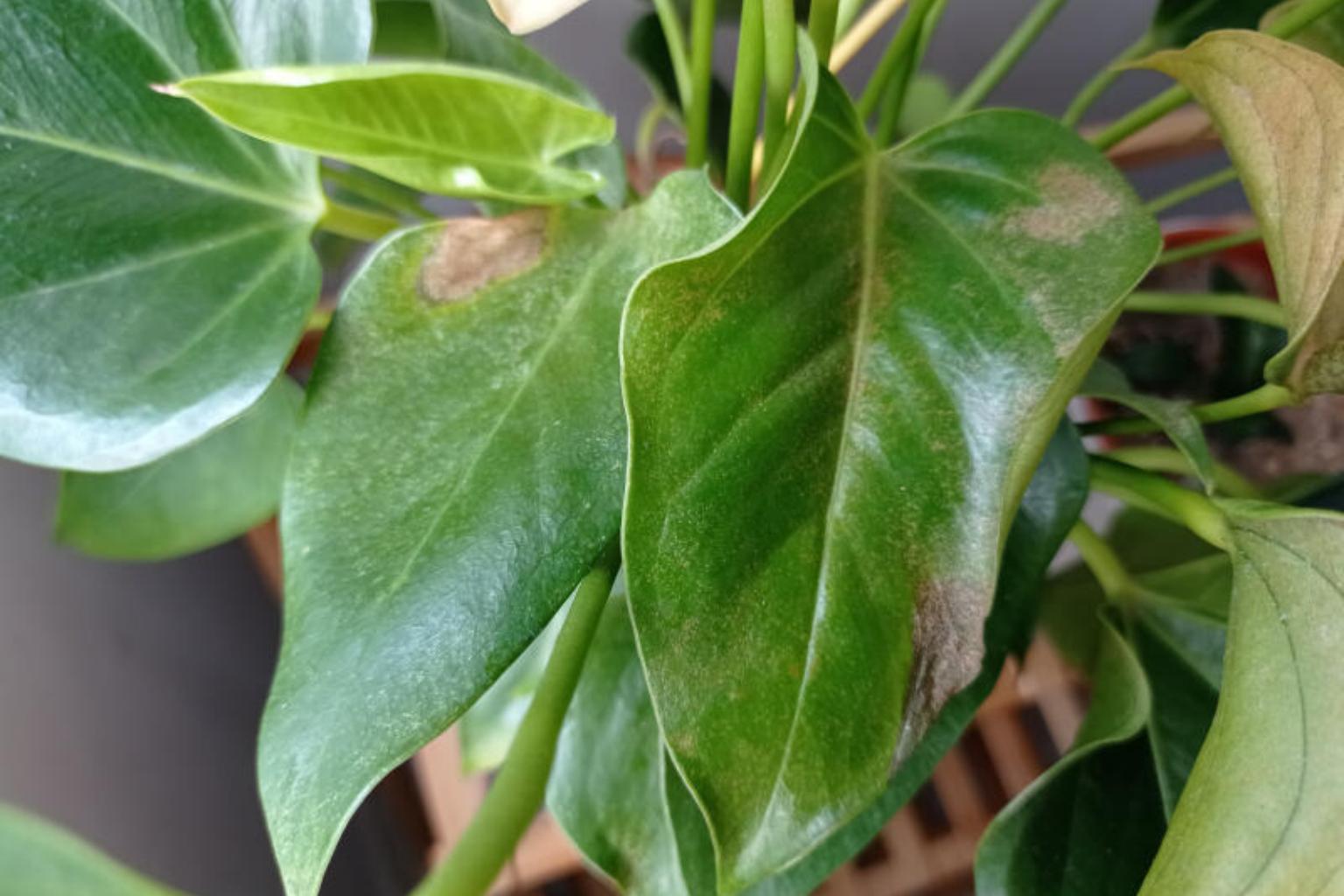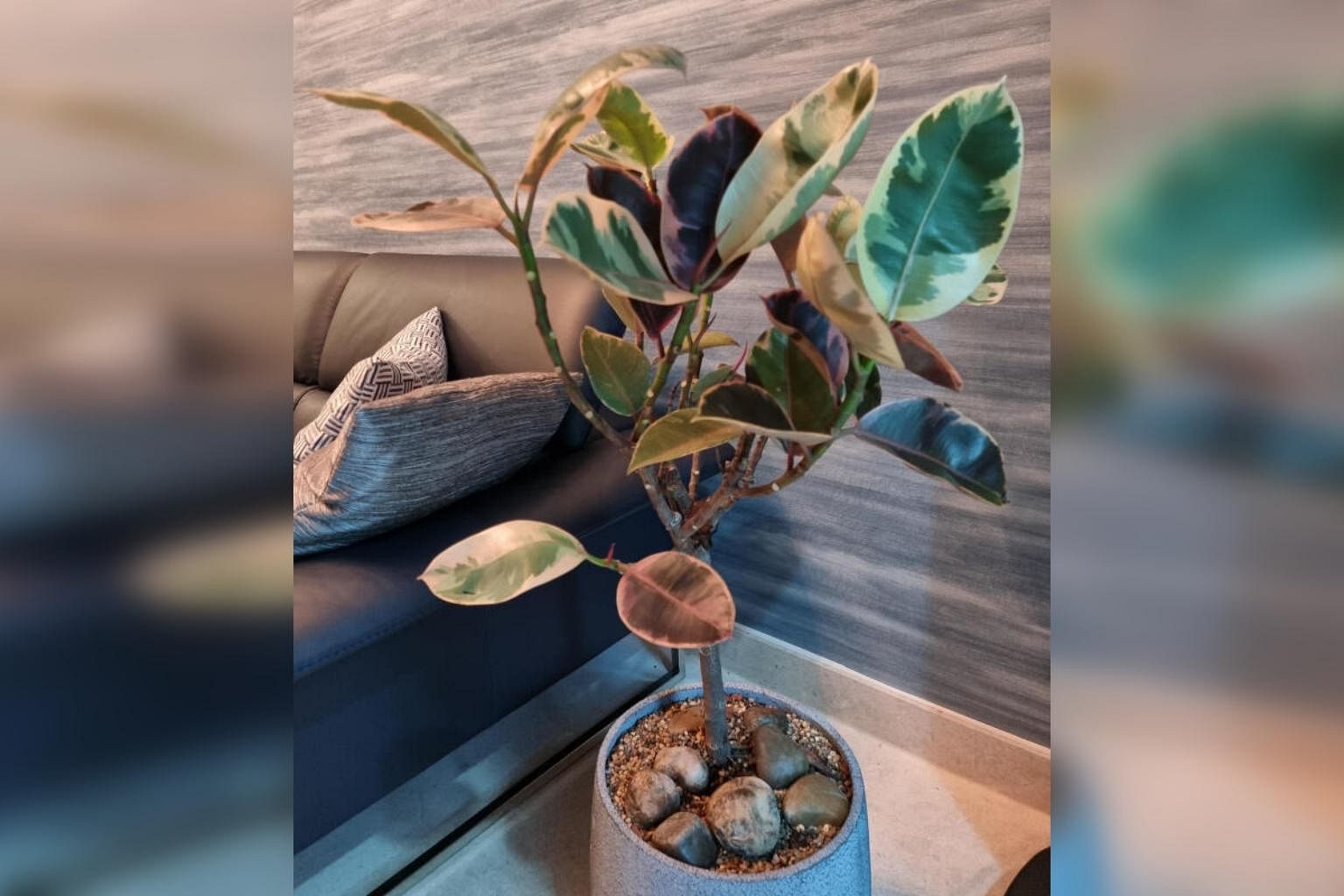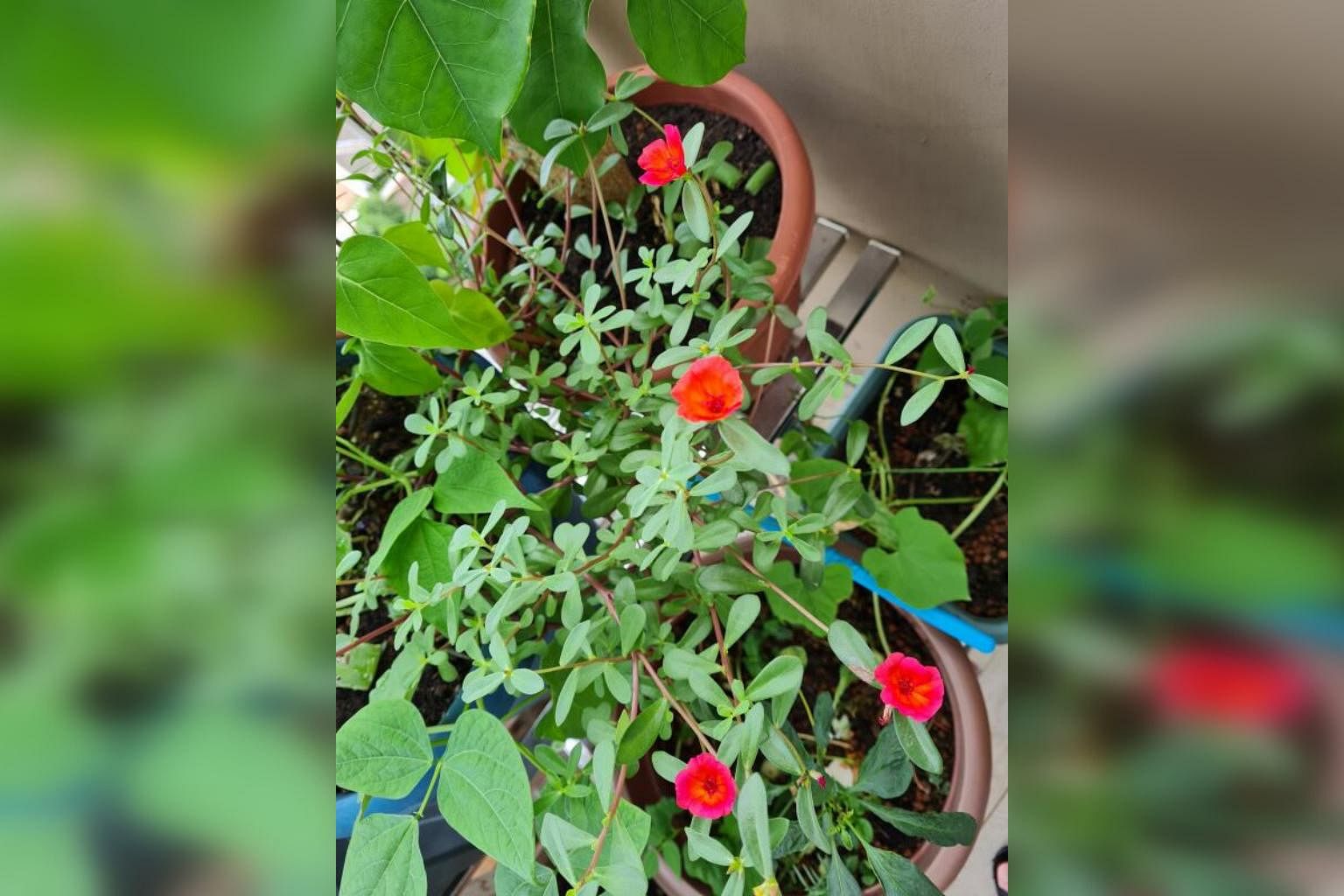Root Awakening: Growing bitter gourd from seeds
Sign up now: Get ST's newsletters delivered to your inbox

Flamingo flower infested with spider mites.
PHOTO: CHAN CHING WEI
Follow topic:
Grow bitter gourd from seeds in sunny locations
How can I grow bitter gourd?
Tee Kiampoon
Bitter gourd is a vine that can be raised from seeds taken from ripe fruit or seed packets.
Do note that germination is best with fresh seeds.
It is a climber that needs a trellis and requires fertile, well-drained soil to thrive.
Planting bitter gourd in the ground will give it more root space and result in a bigger, more productive plant. The growing spot should receive direct sunlight for at least six hours daily.
The bitter gourd vine should start to flower in about two to three months if grown from seeds. It produces both male and female flowers on the same vine.
Bees are the main pollinators. If bee activity is low, hand-pollinate the flowers to ensure fruit production.
Wrap developing fruit with a plastic bag to prevent infestation by fruit flies and other burrowing pests.
Flamingo flower is infested with spider mites
A disease is slowly spreading on the leaves of my anthurium. I do not see any pests. I have used neem oil, but to no avail. What is the cause?
Chan Ching Wei
From the damage seen on the leaves, your flamingo flower (Anthurium andraeanum cultivar) is likely to be infested with spider mites.
These are common sap-sucking pests found on indoor plants where the environment is usually dry and windy.
The lack of light and predators, as well as water stress, can make a plant prone to infestations.
It is important to provide the plant with optimal growing conditions. In this case, grow it in a location that receives four to six hours of filtered sunlight. Mist the plant regularly to increase humidity and wash off pests.
You can also grow it with other plants nearby to create a humid microclimate. Ensure the media is porous and moist, and do not let the plant dry out or grow in soggy growing media.
Ficus elastica needs direct sunlight

I bought a ficus elastica ruby a month ago. I read that excessive or insufficient water would cause it to shed leaves.
At first, the planet was kept indoors in the middle of a room. It shed leaves, so I moved it near the balcony door with both day and night curtains drawn.
It kept shedding leaves, so I fed it less water. I also drew back the night curtains so it would get filtered light. It stopped shedding leaves for three days, but the dropping has resumed. Each time, two to three leaves fall off. The plant is watered about every two days. Its left side - which gets less light - is almost bald.
S.C. Lim
Ficus elastica, commonly known as the rubber plant, is a popular foliage plant. It is not an indoor plant, contrary to popular belief.
There are large specimen trees growing outdoors under direct sunlight. This plant will not thrive in the long term if it is placed deep inside the home.
Newly bought plants often react to a sudden reduction in light - such as when moving from a nursery to a new home - by shedding leaves.
Since your plant still has leaves, it is not too late to move it to the balcony or corridor, if a sunny spot is available, for it to recuperate. You can take the plant in to display for several days and then take it out again to get ample sun.
Portulaca umbraticola needs sunlight, well-drained soil

This plant may have grown from new soil I bought recently. It flowers almost daily, but the red blooms last for just a day. The plant is grown in an area that gets half a day of sun. It is spreading fast. What is this?
Eklaser Tan
The plant is botanically known as Portulaca umbraticola. It is called Portulaca for short and there are numerous cultivars with varying flower sizes and colours.
It is often confused with a related species, Portulaca oleracea. which occurs as a weed but has smaller yellow flowers. Both plants have flat, spoon-shaped leaves.
The Portulaca umbraticola prefers a sunny location and well-drained soil. It is easily propagated from stem cuttings and needs to be replanted from time to time, as plants tend to get leggy with age.
Monkey's potato is a weed

I have several of these plants growing in my garden and among my potted plants. They produce small purplish flowers. What are they?
Han L.Y.
This plant is the Monkey's Potato and its botanical name is Plectranthus monostachyus. It is from the mint family Lamiaceae and is related to the Indian borage (Plectranthus amboinicus).
It is a very common weed in Singapore, where it readily disperses seeds, and grows in pots and planted areas.
Remove the plant promptly before it flowers in order to prevent seed dispersal, which can lead to more unwanted plants.
• Answers by Dr Wilson Wong, an NParks-certified practising horticulturist, parks manager and ISA-certified arborist. He is the founder of Green Culture Singapore and an adjunct assistant professor (Food Science & Technology) at the National University of Singapore.
• Have a gardening query? E-mail it with clear, high-resolution pictures of at least 1MB, if any, and your full name to stlife@sph.

